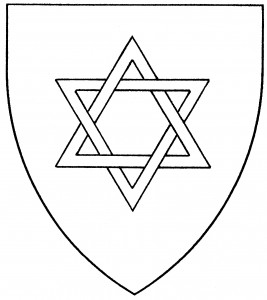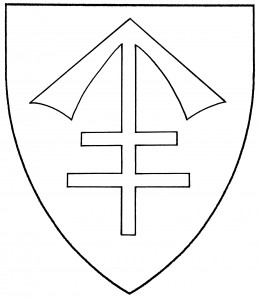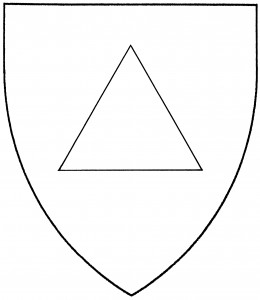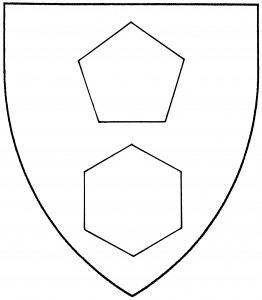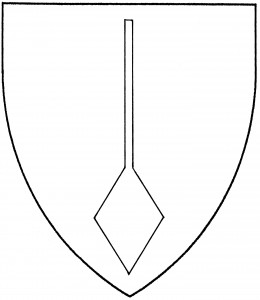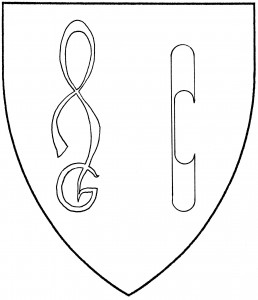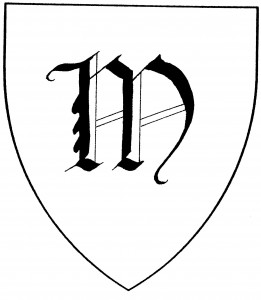
Gothic capital letter “M” (Period)
A letter is a single written glyph, symbolizing a phoneme of speech. By default, letters are taken from the Roman alphabet, with the case and script sometimes specified in the blazon; letters from other alphabets, such as Greek and Hebrew, are also permitted. The use of single letters as decorations on shields dates early, but as charges in actual armory, they came into use much later: e.g., the three letters “M” in the arms of Le Marchant, 1362 [DBA2 384], or the two letters “S” in the arms of Mendoça, c.1540 [Nobreza xii]. The illustration shows a Gothic letter “M”.
Full words are also found in period heraldry: the word “souvereyne” in the badge of Henry of Lancaster, 1385 [Hope2 167], and the word “lieb” as a charge in the arms of von Startzhausen, 1605 [Siebmacher 84]. Iberian heraldry, in particular, has examples of whole phrases used as charges: e.g., the arms of Velaz de Medrano, mid-16th C., with a bordure charged with the opening words of the Ave Maria [Armeria 70].
In Society heraldry, the category of letters includes such other symbols as astronomical signs, Arabic script, Norse runes, and Japanese kanji. The use of these symbols is restricted in one way: since any person may use a common word – and certainly may use their own initials – no Society armory may consist solely of letters, words, or their equivalents. The armory must include some other charge as well.
Punctuation marks, being unattested in medieval armory, are not permitted in Society armory. See also chi-rho, cypher charges, musical note, nefr, rogacina.
Franchesca MacBeth bears: Vert, a Gothic capital letter “M” Or and a base embattled argent masoned sable.
Ottavio Corsi bears as a badge: Argent, on a fess cotised between the Arabic script “al-mulk” and “lillah” sable, the Arabic script “abd-al-Malik Husam ibn Khalid” argent.
Dulcinea Margarita Teresa Velàzquez di Ribera bears: Argent, three piles in point gules, overall an estoile, all within a bordure sable charged with the words “Dignidad, Vertud, Honestad” Or.
Julien Lapointe bears: Gules, three lowercase Greek letters pi within a bordure embattled Or.
Cadell ap Hubert bears: Argent, the astronomical sign of Sagittarius and a gore sinister azure.
